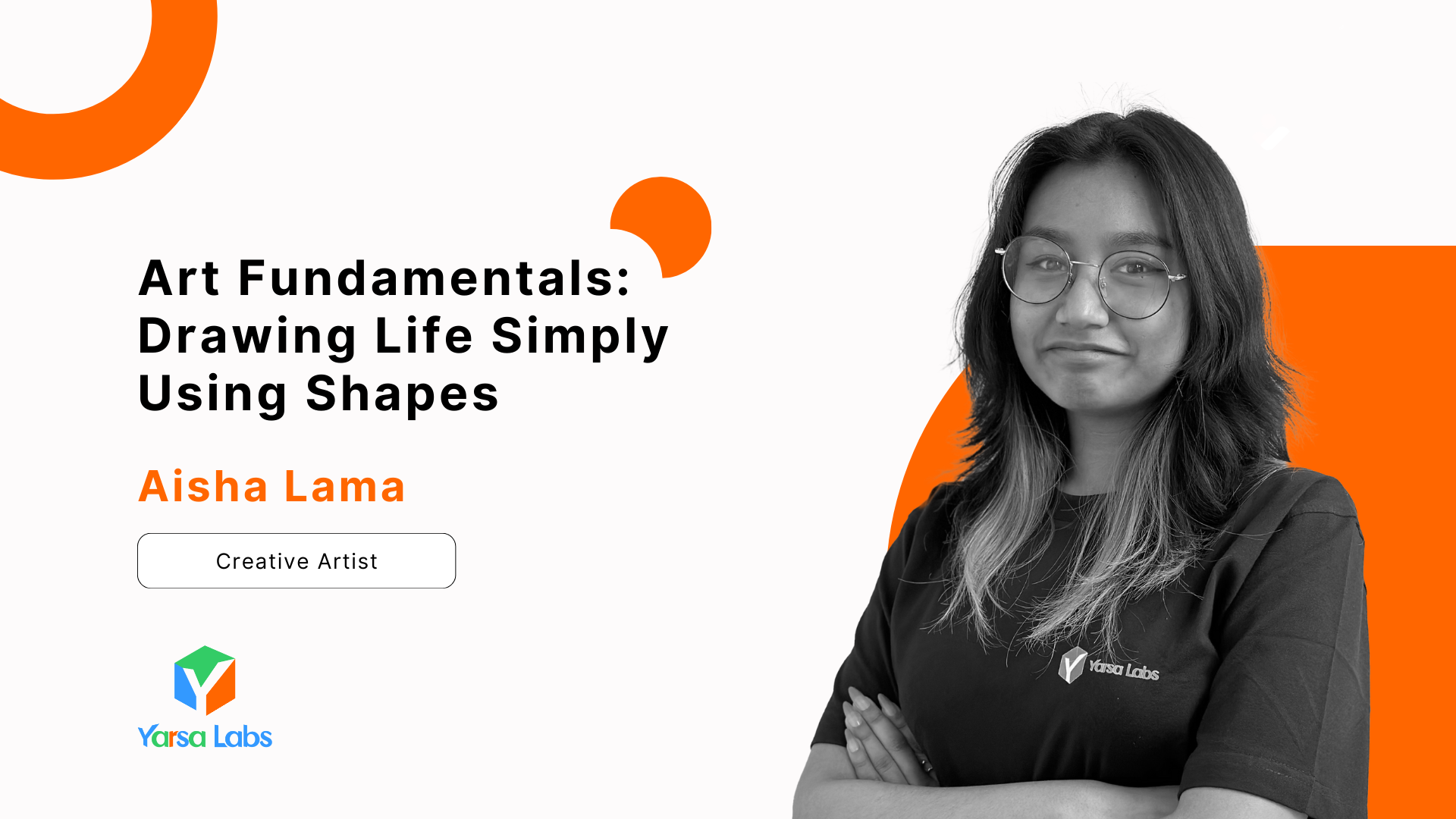Introduction
In my previous article, Art Fundamentals: Using Shapes to Simplify Your Art, I had highlighted the significant role shapes play in art and expression. The concept of breaking down complex objects using basic shapes in drawing is a foundational skill and a concept that every artist should explore and familiarize themselves with. Not only does it allow the artist to efficiently express their ideas onto their canvas, it also helps them streamline their entire creative work process!
We have previously explored this concept and have developed a basic understanding on how it works. The primary understanding being; instead of looking at the complexity of the subject, one ought to focus on the overall shape that makes up the subject itself.
Similarly employing this concept, in this article we will move onto the application of this fundamental concept in areas other than Still-life, i.e, Live subjects!
Geometric Shapes in Organic Subjects
Although the different types of shapes have been discussed in my previous article, I'll give a quick summary to those who might have forgotten or might not have read the article!
Geometric Shapes (Regular Shapes) can simply be understood as shapes made using mathematics, as they are precise and regular. For example: square, circle, triangle, etc.
On the other hand, shapes that are irregular, more rounded, free form and most often one of a kind are Biomorphic Shapes (Organic Shapes). Biomorphic shapes can only be seen once geometric shapes are built on each other or more details are added to them.
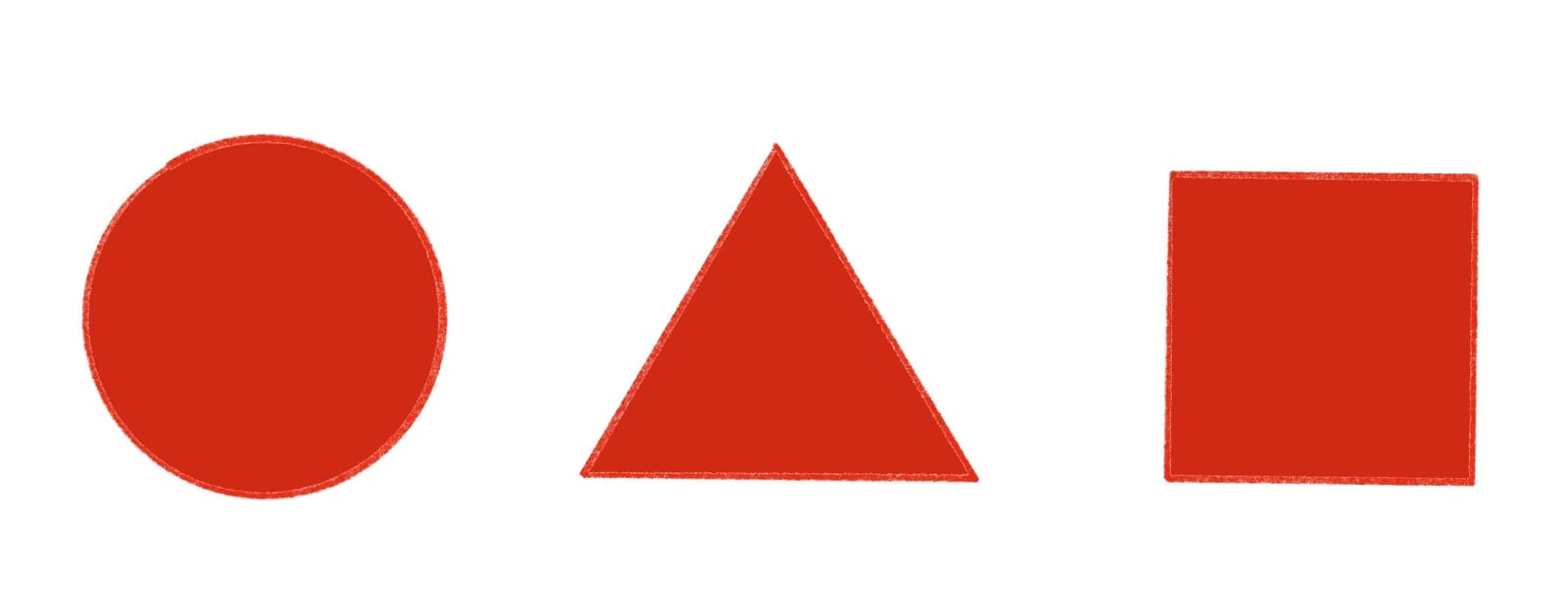
- The first step of drawing live subjects using shapes is breaking down the subjects into these basic geometric shapes. Although this might seem puzzling at first as live subjects such as the human body have countless intricacies, linked more closely to organic shapes, the use of solid geometric shapes will allow the artist to better illustrate their ideas with precision and clarity.
- For instance, when drawing a person, one might over-think and end up overwhelming themselves with the minute details of the human body. However, if all those intricacies are initially disregarded and one looks at the overall shape those intricacies make up, it can result into a subject that is a lot less intimidating to approach!
Through the use of this concept, the artist can pay less attention to the nitty-gritty aspects of the human body and instead focus more on the structure, composition and precision of it. In this way, the artist's creative process is largely affected by making their ideas significantly more straightforward to approach.
Applying Shapes to Life Drawings
Now that we have familiarized ourselves with the theory of this concept, lets move on to practically using such simple shapes to illustrate a live subject, in this case, the human body.
However, before we get into applying this concept onto real life people, I have illustrated a quick example of how one could reduce the complexity of a human body into simple shapes while still maintaining the information that those shapes portray a human body.
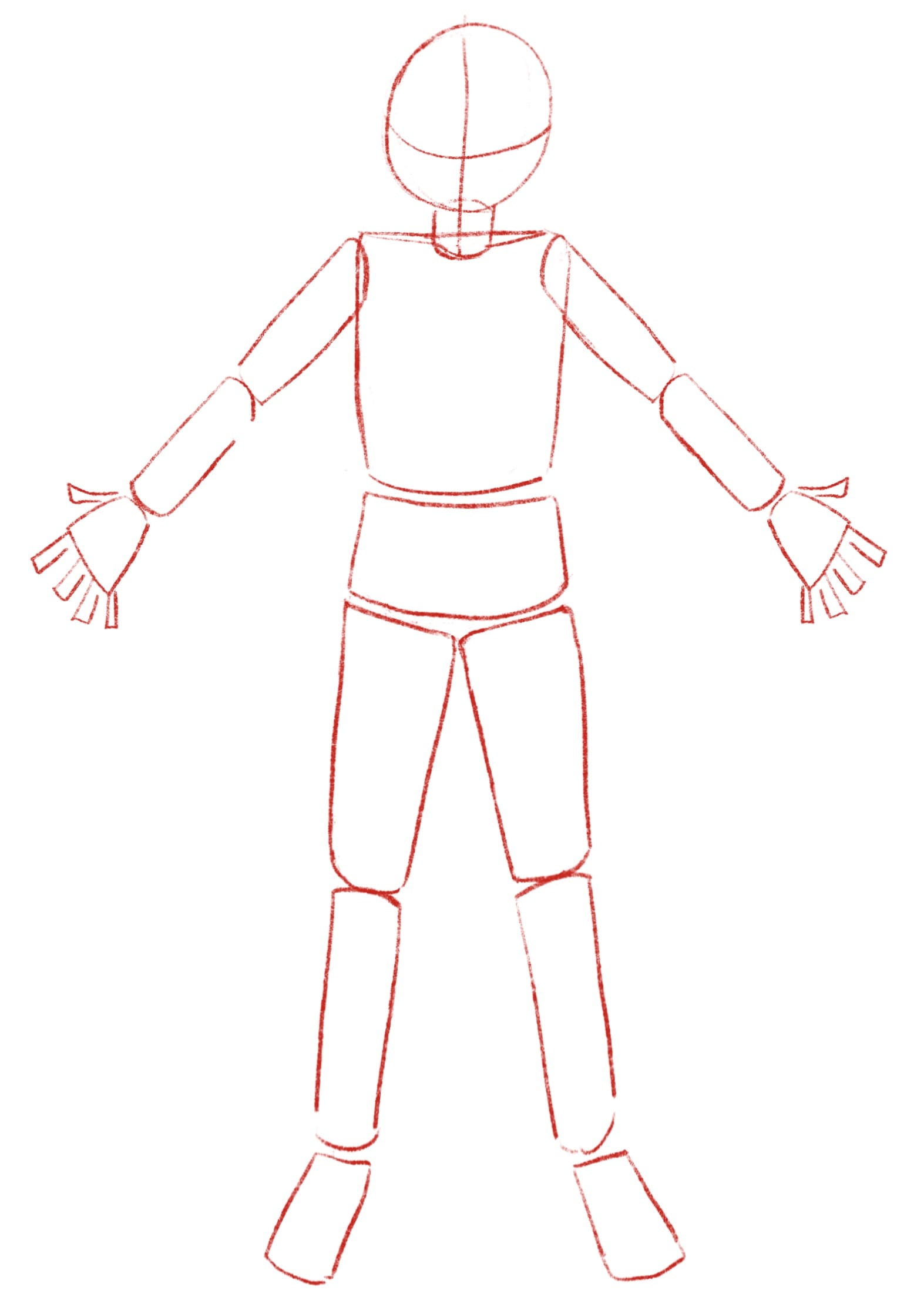
- Here, to start with drawing the human body using shapes, you can see that I have used simple shapes such as ellipses, rectangles and cylinders to portray the human body.
- I have separated the shapes in the areas that the human body is segmented for a clearer portrayal and easier guideline, which can greatly assist in the final completion of the artwork.
- Keep in mind that the geometric shapes that are used don't have to be completely literal, with sharp edges and hard corners. The edges and corners can be rounded and tapered for an easier transition from the base structure to working on and completing the figure.
Now that we have a visual example of how to reduce the complexity of the human body, let us finally see how we can apply it using real life people as the subjects!
Using Shapes to Illustrate Real Life Subjects
To start off this exercise, I have taken a figure with a simple pose. We begin by first breaking down the subject into simple and loose shapes. While this helps to make sense of the many shapes comprising the subject, it also helps in proportioning the various body parts and their placements.
- For starters, I have drawn a rough circle for the head, followed by a cylindrical shape for the neck. The hip and torsos are rough rectangles and the feet are a pair of quadrilateral shapes. We can see that even with these loosely drawn shapes, we can still identify the figure to be that of a human body!
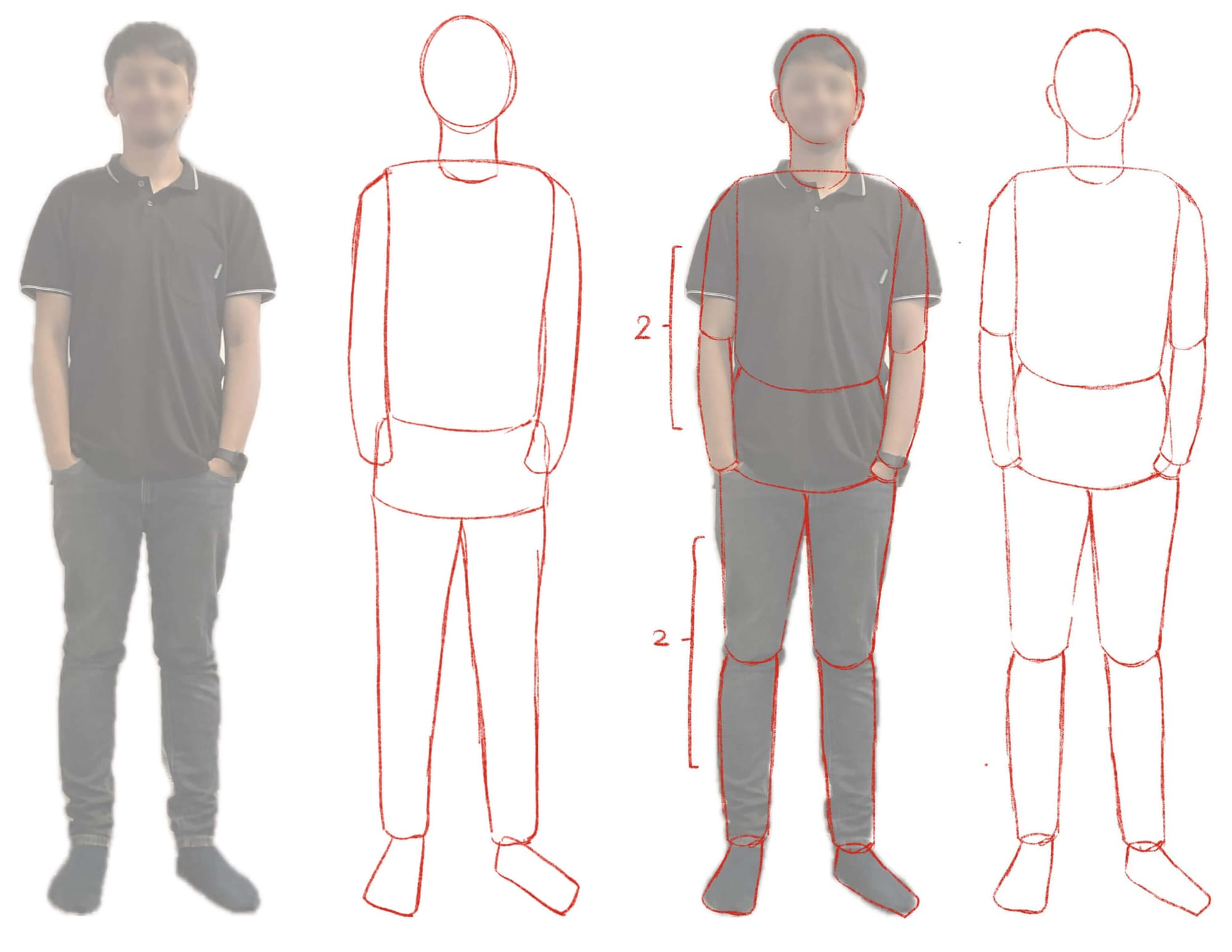
- After the initial step of breaking them down roughly into large shapes, we can move on to breaking those larger shapes into smaller shapes.
In my example above, we can see that I have further broken those larger shapes, making them slightly more defined.
Where these shapes are sectioned off mostly depends on where the joints of the human body are located. Here, the arms are broken into 2 sections and so are the legs. The rest of the shapes are also defined further into making them as similar to the real subject as possible! - Next, we can move on to a slightly more complex pose with the subject.
Using the same principle we used in the first exercise, we first break down the subject into large loose shapes. These shapes are not completely accurate but they still provide great assistance in the positioning and proportioning of the human body. Thus, it serves as the foundation for the foundation of your drawing!
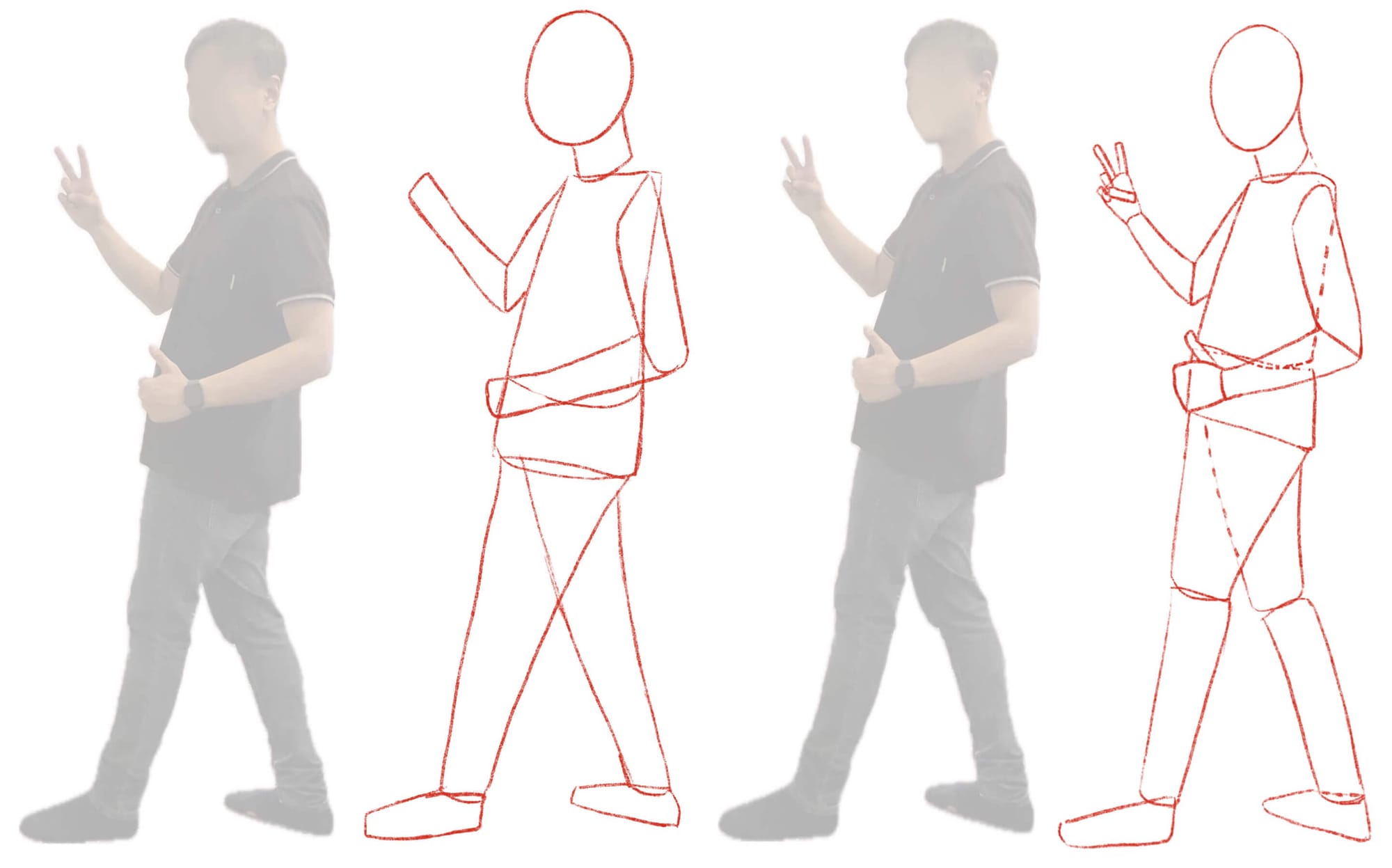
- Similar to the prior example, the larger shapes are sectioned into smaller shapes and in this case, smaller and more detailed shapes are added to the hands for the fingers. Although the shapes added to the hands are only small rectangles, they still effectively relay the information of being fingers.
- As the final example, I have taken a more perspective heavy pose for the subject. This can be a slightly more challenging exercise if one is not familiar with perspective drawing. However, following the same principle of shape building can greatly reduce the difficulty level of portraying the subject.
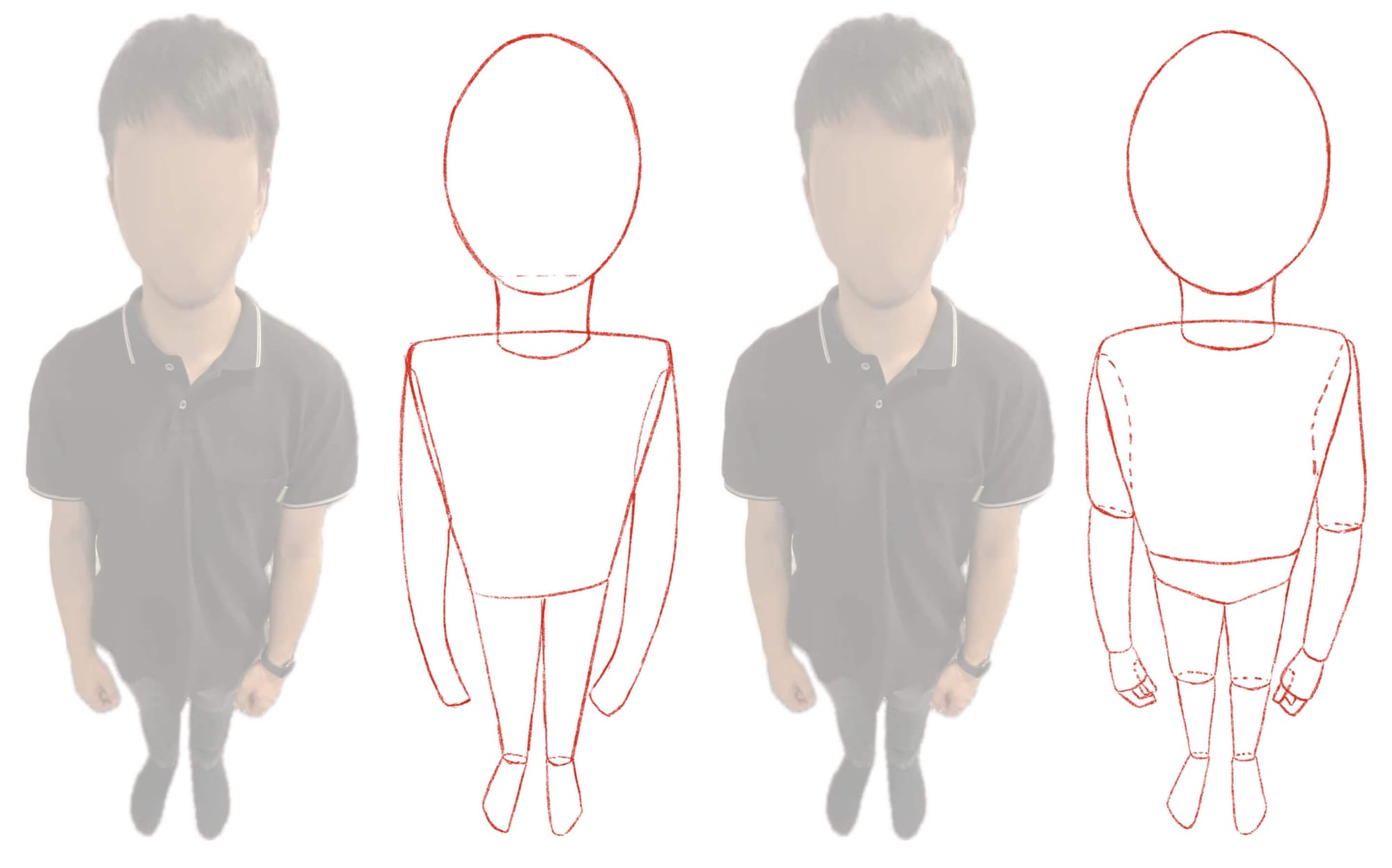
- Firstly, we can draw the head as one of the biggest shapes in the drawing due to it being the starting point of the perspective. It is almost as big as the upper torso of the figure. From this point on, all the shapes steadily become smaller the further down it goes.
Through this exercise in particular, we can see how significantly shapes can help in building a strong foundation for your drawing regardless of how daunting the subject or pose is as it greatly simplifies the entire process!
Conclusion
Although drawing live subjects such as people and animals might seem like a daunting idea at first, if this concept of reducing complexity is effectively applied, it will gradually transform into an idea that is more simply approachable and achievable.
From the various examples we explored in this article, we can see how an artists creative process can be greatly simplified with the use of shapes in building the foundational structure of a subject. The usefulness of this concept shines through especially when it comes to drawing live subjects as artists usually tend to over-complicate them in particular.
Now, let us start building the foundational aspect of our art journey by simplifying!
Thank you for reading and I hope this article helps you on your art journey!

